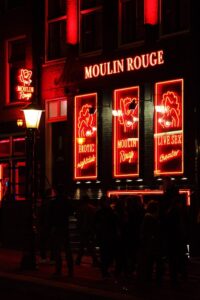Red Light Areas in Haryana act as a stark reminder of the complex social fabric within the state. These areas, including G.B. Road in Faridabad, Shivdaspur in Yamunanagar, Bhiwani, Rohtak, Sonipat, and Karnal, exist as pockets where the practice of commercial sex work persists. The presence of Red Light Areas in Haryana signifies the challenges faced by individuals involved in this profession, highlighting the need for a comprehensive understanding of the socio-economic factors that contribute to their existence.

By acknowledging the reality of Red Light Areas in Haryana, we can foster conversations around the rights, well-being, and empowerment of those working within these marginalized communities. It is imperative to address the systemic issues surrounding Red-Light Areas in Chandigarh and work towards creating a more inclusive and supportive society that uplifts individuals and offers them alternative livelihood options.
Haryana, a state in northern India known for its agricultural prowess and rapid urbanization, also harbors red-light areas that remain hidden from the public eye. In this article, we delve into the existence of these areas, exploring their socio-cultural context and shedding light on some of the notable red-light areas in Haryana.
List of most Famous Red Light Areas in Haryana
- G.B. Road, Faridabad: Located in the city of Faridabad, G.B. Road, also known as Garstin Bastion Road, stands as the most prominent red-light area in Haryana. Situated near the NIT (National Institute of Technology) campus, G.B. Road is infamous for its bustling streets lined with brothels, where commercial sex work takes place. The area attracts clients from various parts of the region, posing challenges for the individuals involved and raising questions about the socio-economic factors that perpetuate its existence.
- Shivdaspur, Yamunanagar: In Yamunanagar district, Shivdaspur emerges as another significant red-light area in Haryana. This area, discreetly tucked away, has gained notoriety for its presence of brothels and sex work. Located near the Yamunanagar-Jagadhri railway station, Shivdaspur attracts clients seeking such services, highlighting the complex social dynamics and challenges faced by the individuals involved.
- Bhiwani, Haryana: Bhiwani, a city in Haryana, also grapples with the existence of a red-light area. While the exact location may vary, reports suggest the presence of establishments catering to commercial sex work. This poses challenges for the individuals engaged in such activities, as well as for the community, necessitating a nuanced approach to address the underlying issues and provide support.
- Rohtak, Haryana: Rohtak, a city with a rich cultural heritage, is not untouched by the presence of red-light areas. Though discreetly hidden, these areas cater to the demand for sex work, presenting complex social dynamics and challenges for the individuals involved. The precise locations within Rohtak may vary, and they require careful consideration to understand the specific circumstances and issues faced by those engaged in sex work.
- Sonipat, Haryana: Sonipat, a city situated in the National Capital Region (NCR) of Haryana, is also known to have a red-light area. This area, characterized by discreet establishments and clandestine operations, serves as a destination for commercial sex work. The exact location and extent of the red-light area in Sonipat may vary, highlighting the need for a comprehensive understanding of the challenges faced by individuals within this context.
- Karnal, Haryana: Karnal, a historic city in Haryana, also confronts the presence of a red-light area. This area, hidden within the city’s fabric, caters to the demand for commercial sex work. Understanding the specific location and circumstances surrounding the red-light area in Karnal is crucial to comprehending the complexities and challenges faced by individuals involved in the trade.
Conclusion: The red-light areas in Haryana, including G.B. Road in Faridabad, Shivdaspur in Yamunanagar, Bhiwani, Rohtak, Sonipat, and Karnal, reveal a hidden reality within the state. Recognizing the socio-economic factors contributing to the persistence of these areas is essential for addressing the well-being, rights, and empowerment of individuals involved. By fostering a compassionate and inclusive society, we can work towards creating support systems, offering alternative livelihood options, and advocating for the dignity and rights of those engaged in sex work. It is crucial
